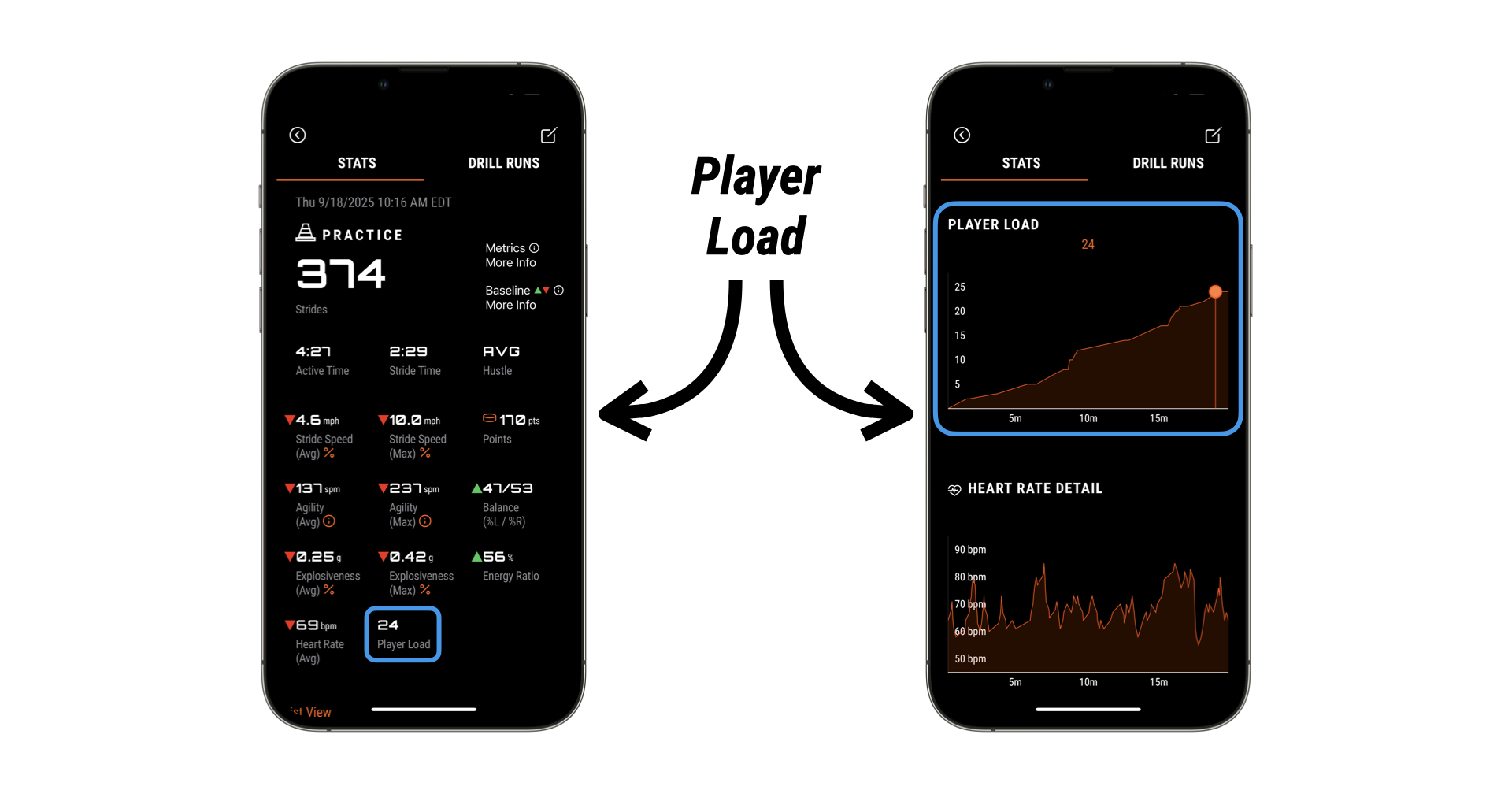What is PLAYER LOAD?Updated 3 months ago

What is Measured:
- Movements (e.g. Skating, Shooting, Body Checks, etc.) in all directions (Forward, Sideways, Upwards) from the Core sensor accelerometer .
- Instantaneous Player Load for each sampling window.
- Cumulative Player Load for each skating interval, shift, drill run and session is calculated as:

Why it Matters:
Player Load tells you how much work a skater is doing on the ice, not just in a single drill, but in total (skating, shooting, checking, etc.). It helps you see when they’re pushing hard, when they might need rest, and whether training is balanced over time.
How to Use:
- Weekly and monthly trends - If Player Load keeps climbing without breaks, your skater risks overtraining or fatigue.
- Balancing practice vs rest - Lower load days (or weeks) are just as important since that’s when muscles recover and adapt.
- Weeks before games or tournaments - Use the load data to taper (reduce) practices slightly, so your skater is sharp but not sore.
- Comparing effort across sessions - If two practices had the same duration but one has much higher Player Load, that session was more intense (so might need more recovery afterward).
- Plan rest days intentionally - On days with high load, maybe limit additional dryland training or schedule active recovery (light skate, stretching).
- Celebrate progress - If over a season, your skater can gradually handle higher loads without extra soreness or fatigue, that’s a sign of improved fitness.
- Flag concern signs - If load spikes suddenly or stays high week after week, watch for signs of fatigue, soreness, or drop in performance (slower reaction, less jump on starts, etc.).
Where to Find:
 Player Load on Individual Session View
Player Load on Individual Session View